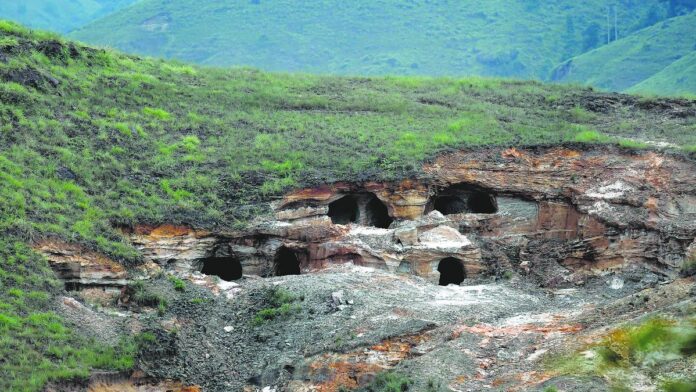Rat hole mine rescue in Assam’s Dima Hasao district has turned into a grueling operation, marked by zero visibility, complex underground tunnels, and an unrelenting influx of water. Since Monday, at least nine miners have been trapped in the depths of a coal mine after it flooded, creating a dire situation for rescue teams.
Over 200 personnel from multiple agencies, including the Indian Navy, National Disaster Response Force, and Assam State Disaster Management Authority, are engaged in this 24-hour operation to retrieve the trapped miners. However, the operation has been hampered by the lack of a mine blueprint and the challenges posed by the mine’s conical structure, which narrows as it descends.
Lack Of Visibility And Uncharted Tunnels
One of the primary hurdles in the rat hole mine rescue is the lack of visibility. Divers report total darkness at depths of 100 feet within the central pit of the mine, leaving them to navigate by touch.
“We cannot see anything, and we have no map, scale, or blueprint of the mine. The pit narrows as we go further down, and we can only feel our way inside,” said one diver.
Adding to the complexity are the tunnels or “rat holes” branching from the central pit. These narrow passages are where miners typically work. While one body was retrieved from the central pit, there is no way to determine how many tunnels exist or where they might lead.
Pumping Out Water: A Daunting Task
Efforts to dewater the mine have met with repeated setbacks. Local motorized pumps have been in operation since Monday, but the water level has remained steady at 100 feet. In fact, after hours of dewatering, the water level was found to have increased by six inches.
On Wednesday, a high-capacity motor pump from ONGC was brought to the site but proved unsuitable as it wasn’t submersible. By Thursday, a more powerful pump from Coal India Limited, capable of removing 2,250 liters of water per minute, was airlifted to the site. However, rescuers remain uncertain whether even this pump can outpace the continuous water inflow.
Possible Water Sources Add To Complexity
Rescuers are grappling with the mystery of the water source flooding the mine. Officials suspect two possibilities:
- Rainwater stored underground that miners may have inadvertently accessed during excavation.
- A shift in one of the area’s groundwater tables, which is common in hilly terrains like Dima Hasao. If it’s the latter, the water flow could remain constant, making dewatering nearly impossible.
“We will pump water for 24 hours straight to assess whether this strategy is viable,” said Gyanendra Dev Tripathi, CEO of the Assam State Disaster Management Authority.
A Herculean Operation With Slim Hope
Despite advanced resources and relentless efforts, rescuers have only managed to retrieve one body so far. With no map of the mine and the tunnels beyond reach, the situation remains dire. The rat hole mine rescue serves as a stark reminder of the risks associated with unregulated mining and the challenges faced by disaster management teams in remote locations.
The focus now is on sustained dewatering operations and planning the next course of action based on the results. However, the fate of the remaining miners hangs in the balance as rescuers battle against time, water, and the unknown.


